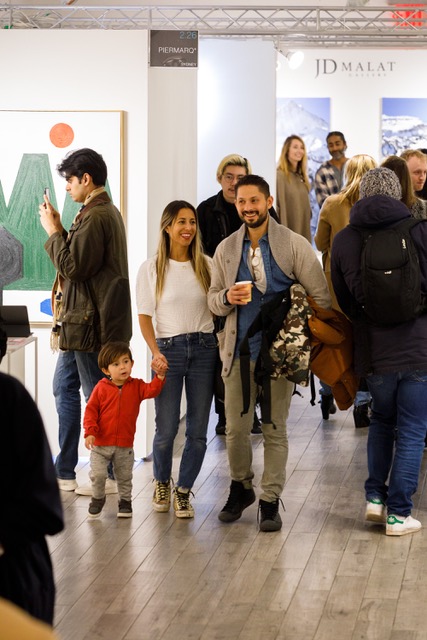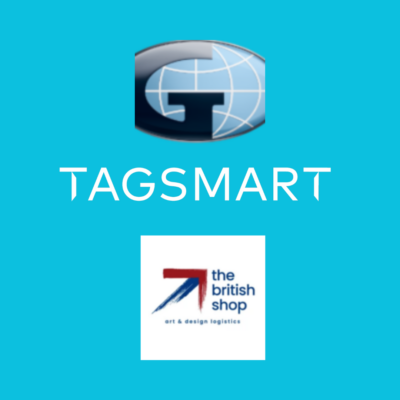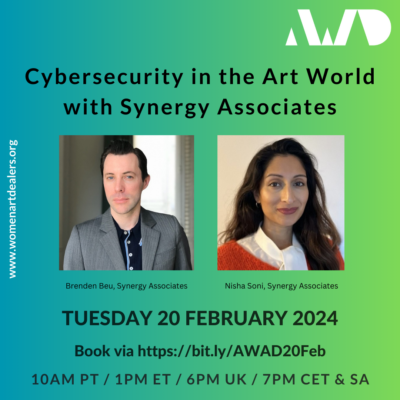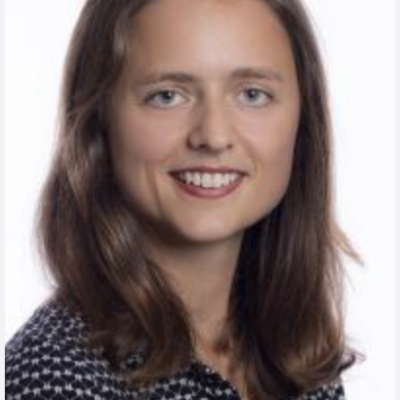AWAD is delighted to welcome back Global AWAD Chapter member and founder of Art Vista Magazine, Kristen Knupp. This article was previously published in Art Vista Magazine on May 9th, 2022.
VOLTA Art Fair returns to New York during Frieze Week, from May 18 to 22, 2022. Operating as a beacon for creative discovery, VOLTA New York is the American incarnation of the original Basel fair, since debuting in New York in 2008. VOLTA will return to New York at 548 West 22nd Street, the former Dia Building and Hauser & Wirth gallery space.
Kristen Knupp, Art Vista Magazine: VOLTA has a new location for the New York fair, at the former Dia building and Hauser & Wirth gallery space in Chelsea. What excites you about this new location, and about the VOLTA Art Fair New York in general?
Kamiar Maleki, Director of VOLTA Art Fair: Symbolically, it marks an exciting new chapter for the fair which has a timely and unique opportunity to distinguish itself in complement to the wider New York art fair ecosystem. The new floorplan allows us to create an intriguing and exciting flow to the fair, juxtaposing presentations by more established galleries amidst newcomers in a way that inspires discovery and new connections at every turn.

From a practical standpoint, it means that collectors and arts professionals traveling to New York specifically for the Frieze Art Fair will also have the opportunity to walk several blocks downtown and experience VOLTA. Being in the hub of Chelsea we also see this as a strategic vantage point for regular gallery visitors. NYC is all about location and we can not be more excited about this one. We recognize the need for a platform celebrating middle-market galleries, in addition to more established galleries who seek a place to exhibit their younger more experimental artists in a forum that will attract the right audience. We see the Chelsea gallery district, and a building like 548 West 22nd Street as having the historic arts DNA and also the proximity to Frieze to support this intentionality. This really positions the presentations of our exhibitors to the right audienc
KK: VOLTA New York will be at the same time as Frieze Week in New York. How does VOLTA make being a “satellite” fair to larger art fairs work to its advantage?
KM: We recognize that despite bolstering galleries’ sales potential significantly, large blue-chip fairs come at a steep cost. Most galleries therefore bring presentations by sound, marketable artists within their stable; works they are confident will appeal widely and sell quickly in these respective markets. That being said, if we can provide an alternative platform, with a lower buy-in that coincides with the larger fairs, we can become a platform for these galleries to consider secondary presentations of younger, more experimental artists. Coupled with strong presentations by complementary middle-market and established galleries, VOLTA therefore becomes this wonderful forum for new discovery, connection, and by extension a pipeline for collectors to acquire work by artists before they are exhibited at the bigger fairs. We want to make discovery more accessible and believe that through this platform we can achieve that.

KK: VOLTA New York has over 20 new galleries in 2022. Is it important to keep adding new galleries to the VOLTA roster to keep things fresh? How are galleries selected, what do you look for?
KM: This year more than ever we have a keen eye on the future. We recognize that the 2022 marks the first step in building the future legacy we seek. As such, bringing in thoughtfully curated presentations by new exhibitors is a wonderful and exciting opportunity this year. I’ve spent the past two years, against all odds and facing many challenges as you certainly know, to build new relationships for VOLTA with this vision in mind. That being said, it is as important for us to maintain relationships with quality, established galleries who have exhibited with us in years past. At the 2022 New York edition we bring back galleries like INDA Gallery from Budapest, who last exhibited with VOLTA in 2015, as well as Jonathan LeVine Projects, who last exhibited with us in 2014. We are mindful that we need to respect our history and DNA, but also that evolution is imperative for us to establish our voice in New York, and well beyond for that matter.
Galleries are selected based on the merit of their programs and presentations. As noted, we are looking for galleries that have established themselves either in the middle-market or at the top of the market but remain committed to presenting artists and works that push the dial. We also desire to create a diverse, yet cohesive fair experience. Because “discovery” is one of our key cornerstones, we are mindful to create an environment of experimentation.

Kumkum Fernando, Listening Lilly, 2022, Mixed media – Combined wood, Brass detailing, Magnets, UV print, Lacquer, 28 x 15 x 7 inches, courtesy Jonathan LeVine Projects
KK: There seems to be a focus on solo shows at VOLTA, for example, Jen Pack at Kouri + Corrao Gallery, and Jakob Kirchmayr at Galerie Ernst Hilger, among others. What are the advantages of a solo presentation from your point of view? Is it more interesting for collectors, and why do you think galleries make the decision to show a single artist’s work
KM: Solo presentations remain a way to exhibit a broader scope of an artist’s work. They invite pause and holistic consideration. Solos function as incubators of sorts, giving the public a chance to engage with, dialogue about, and inquire about a wider breadth of an artist’s work. As VOLTA continues to seek distinction as a platform for artists in the early- to mid-career moment, a prioritization of solo booths allows collectors to really get to know these artists before they matriculate to a bigger ticket fair. This is where the “discovery” cornerstone keeps coming into play. Galerie Ernst Hilger for example, exhibited at Art Basel, but VOLTA offers his up-and-coming and not yet established artists an international audience and platform. Through dedicated solo presentations, visitors receive a deeper and more focused impression of the artist and the work.

Zsofia Schweger, Still at Home (in Stratford, London) #6, 2021, acrylic on canvas, 50 x 40 cm, courtesy INDA Gallery (Budapest)
KK: How did VOLTA manage during the pandemic, and will any of the changes be continued since the pandemic has faded away?
KM: The pandemic posed some clear difficulties for VOLTA and many of our plans were constrained, shifted, or otherwise scrapped as a result. After the past few years, we’ve emerged with a newfound challenge, one we are holding ourselves accountable to. We see this as a chance to usher a new chapter for VOLTA, to really assess what the market needs, and to adapt our existing brand to something that is need-responsive, additive, and unique. The wake of the pandemic has left us with an altered market, one ripe with opportunity namely for the middle-market that suffered greatly these past few years. If we can strive to identify the stated needs of our exhibitors and our collectorship, we’ll succeed in establishing our fair within the existing art fair nexus.
KK: What are the main differences between the VOLTA New York and the Basel fairs?
KM: While the New York fair certainly appeals to its local audience, we see the city as an international metropolis and the demographics of the New York fair are quite reflective of this. You’ll see a broad range of galleries from across the globe, in addition to exhibitors from Greater New York. Basel is where VOLTA was founded in 2005, where the fair has its roots and a seventeen-year history. Between the young art fair LISTE and the heavyweight Art Basel, VOLTA shows the art market’s more diverse creative output with a focus on recent developments. Built on the fair’s reputation in Basel, we try to challenge the art fair landscape, thinking outside the box. In 2022, VOLTA Basel will host the first cultural spotlight at an art fair, in which a foundation showcases unrepresented artists from Saudi Arabia, curated by a local curator. In addition, we bring international galleries from Argentina, Columbia, Japan, Kazakhstan, Lithuania, Malaysia, Peru, Republic of Korea, the UAE, as well as a strong roster of Swiss galleries to showcase in Basel. You’ll see the local community and collectorship rallying around presentations that may otherwise not be represented at the Art Basel behemoth.

KK: VOLTA became a part of the Ramsay Art Fairs family in 2019, and what are VOLTA’s plans for the future? Are any big changes planned?
KM: In joining the Ramsay Fairs family, VOLTA stepped out from the shadow of a parent fair with the goal of reviving its vision and carving a specific niche for our exhibitors. We therefore have a new opportunity to align ourselves within the markets and fair ecosystems we deem strategic and beneficial to our exhibitors. At Ramsay Fairs, transparency and accessibility are key tenets of the brand, and we look forward to developing our reputation about thoughtful curation and a sense of discovery. The “connect” and “collect” cornerstones of our brand are most important now more than ever, as we reintroduce the brand under its new leadership and ownership to art-savvy audiences that have been enjoying Ramsay’s family of fairs for years and those who may have been familiar with VOLTA in the past but will be pleased to follow its future evolution.
Cover Image: Volta New York Fair. Photo: David Willems




